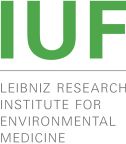A team of scientists from the Medical Faculty of the Heinrich Heine University Düsseldorf (HHU) and the IUF – Leibniz Research Institute for Environmental Medicine in Düsseldorf developed a multicellular model for human neurometabolic diseases associated with mitochondrial complex I deficiency and identified a potential therapeutic compound as well as its underlying mechanism. The results of this study were recently published in the renowned scientific journal Nature Communications.
(Düsseldorf, 23-MAY-2022) – C. elegans, a microscopic roundworm with a size of about 1 mm and high genetic and metabolic similarity to humans, is widely used as model organism for investigating neuronal development, aging and pathologies. The research team headed by Dr. Natascia Ventura, which is affiliated with the IUF – Leibniz Research Institute for Environmental Medicine and the Medical Faculty (Central Institute of Clinical Chemistry and Laboratory Diagnostic) of the Heinrich Heine University Düsseldorf, primarily uses this organism to investigate the role of mitochondria, the cell power house, in healthy aging and the underlying mechanisms. They also established a C. elegans screening approach to identify environmental and nutritional interventions acting through mitochondria to induce or counteract age- and disease-associated neurodegeneration.
Recently, the group has also developed C. elegans models to study human mitochondria-associated diseases (HMAD) primarily associated with genetic-induced deficiency of mitochondrial complex I. These are rare hereditary neurometabolic diseases (such as Leigh Syndrome), most often with early pediatric onset and with fatal outcome and no cure. In order to find therapeutic options, appropriate models and new studies are needed. Exploiting one of the newly characterized C. elegans models and the established screening approach, the Ventura’s lab, together with Prof. Distelmaier from the Pediatric Clinic of the University Hospital of Düsseldorf as well as with international cooperation partners, identified the dietary compound lutein as a potential therapeutic. Lutein restored the roundworm’s neurodevelopmental defects. Ventura’s lab also elucidated the underlying mechanism. Namely, a disturbed information exchange between C. elegans nerve cells (synaptic dysfunction), mediated by abnormal high levels of the cell adhesion protein neuroligin, caused the symptoms and was suppressed by lutein. Of note, they found neuroligin overexpressed also in the brain of the corresponding mouse disease model. Their study was recently published in the renowned scientific journal Nature Communications. Further work is ongoing to investigate in more detail if this finding can be translated to mammals.
390 words, 2797 characters
Source
Maglioni S, Schiavi A, Melcher M, Brinkmann V, Luo Z, Laromaine A, Raimundo N, Meyer JN, Distelmaier F, Ventura N: Neuroligin-mediated neurodevelopmental defects are induced by mitochondrial dysfunction and prevented by lutein in C. elegans. Nat Commun 13: 2620, 2022.
Link to full article: https://www.nature.com/articles/s41467-022-29972-4
Contact for scientific information:
Natascia Ventura, MD, PhD, PD
Group Leader, Institute of Clinical Chemistry and Laboratory Diagnostic, Medical Faculty, Heinrich Heine University and the IUF – Leibniz Research Institute for Environmental Medicine, 40225 Düsseldorf, Germany
Phone: +49 (0)211 3389 203/37
Email: natascia.ventura@uni-duesseldorf.de



